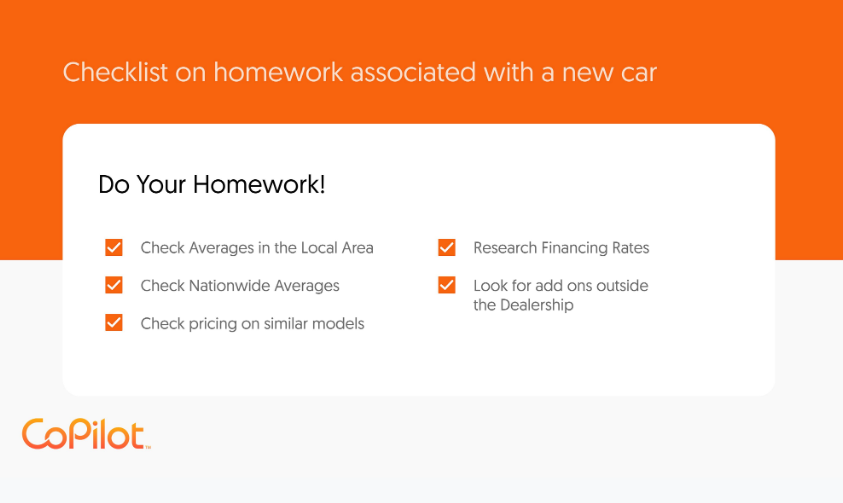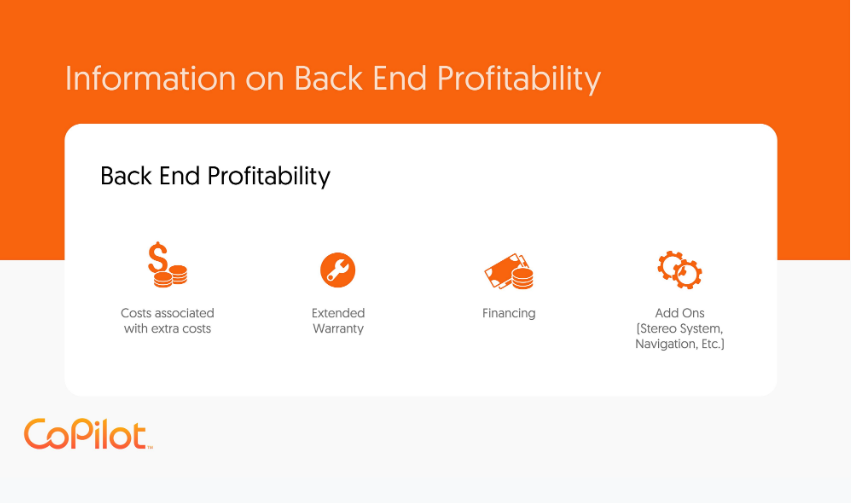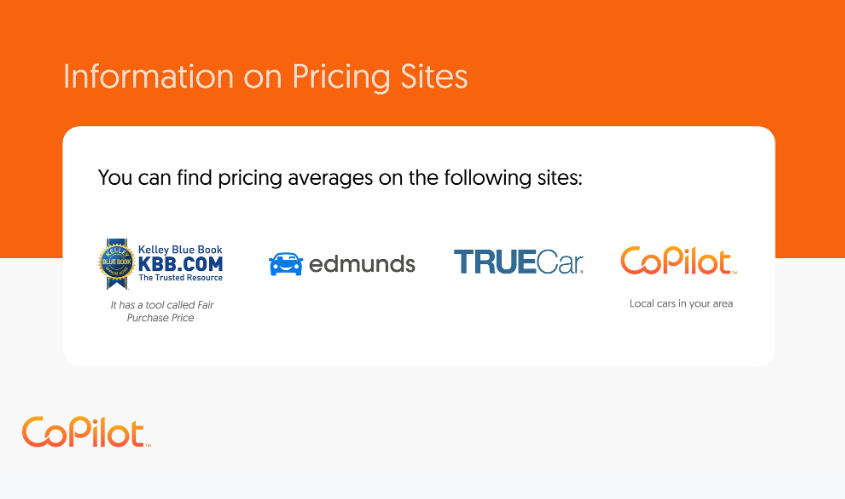How Used Car Pricing Works & How To Get A Better Price

When shopping for a used car, you may find anxiety creeping up around the entire process.
After all, shopping for a used car is often portrayed as a harsh process where conmen in loud suits and greased back hair try to swindle unsuspecting marks out of their money.
In reality, the used car buying process can be easy to navigate, as long as you go in understanding the prices, how dealers make their money, and how you can use that knowledge to negotiate a better deal for yourself.
How Dealers Make Money
There’s no doubt about it; car dealers make money. The used car industry can be a lucrative business, but that does not have to be at the expense of the buyer.
Used car dealers have three main methods of turning a profit:
How dealers make money #1: The front end.
All of the vehicles on the lot were purchased by the company. Front end profitability relies on their ability to sell these vehicles for more than they paid. At the end of the day, that’s classic business. Stores purchase products and sell them at a markup.

How dealers make money #1: The back-end.
Dealers also make money by providing additional products or services on top of the vehicle. This can include add ons like a sound system or built in GPS. It can also include financing and extended warranties that the buyer pays extra for.
How dealers make money #3: Trade-in value.
This occurs when you trade in your old car for money you can put toward a new one. Let’s say that you bring in your former vehicle and sell it to the dealer for $1,500 off your new ride. The dealer can then turn around and sell that car for $2,500 and make a nice $1,000 profit off of it.
Alternatively, they could junk the car and sell it for parts. The car itself might not be sellable, but there are likely some parts and pieces that could fetch a pretty penny. This is taken into account when the trade-in value is determined. If you’re receiving $500 for your vehicle, chances are they believe they can get more than that for the parts.
While most buyers only focus on the front-end, it’s the back-end and trade-in-value that make a large chunk of the dealer’s money. You need to take everything into account from the actual price of the car, to the warranty, trade in, and other pesky additional fees when you calculate what your final price should be.
How Dealers Price Used Cars
When it comes to making money from the front end, you’ll see a sticker listing the MSRP for the car. That’s the manufacturer-suggested retail price.
While this number is important, most cars can and will sell for far less. The listed price is set by the manufacturer and includes room for the dealer to make a profit. It’s approximately 20% higher than the dealer’s invoice cost, so you’ll have some wiggle room when trying to negotiate that price down.

We recommend you ignore the sticker price and begin negotiating at a lower price point. The sticker amount is designed to anchor negotiations at a high starting point, so don’t fall into that trap.
This is where research on average prices of different years and models comes in handy. Before you head to the lot, you should have an idea as to what kind of vehicle you’re looking for. You should research that vehicle extensively before trying to haggle. The more information you have going into the negotiation process, the better your position will be when it’s time to iron out a final price.
How to Negotiate a Better Deal
Keeping the above information in mind, you can negotiate a better deal for yourself by adhering to these three steps:
1. Do your homework - Look at averages in your local area, averages in the country, the cost of similar models, the cost of extra features, and costs of the models a few years up and down. Always check and research financing rates before you walk into the dealership. Shop around to see where you can get extra add-ons outside of the dealership. Beware these back-end add-ons, though. If you’re not careful, you could be easily ripped off.
2. Check Multiple Dealers - Shop around for better deals. Don’t be afraid to say that you can get a better deal elsewhere (be sure you can back up your claim!). And also be sure to focus on the total cost and not just the payment amount.
3. Make an Offer - Most dealers add about 20% gross margin into the used car’s asking price (they ask for 20% more than what they paid for it). We recommend you offer 15% below the asking price. Make sure that you tell the salesman you know there’s a 20% gross margin in the price. While you want him to make a profit, you don’t want to get ripped off in the process.

While the salesman will mention that the asking price is lower than the retail price, tell them that you care about the wholesale price and what he paid for it.
There’s a good chance he’ll act insulted, but don’t feel guilty or let obligation get to you. Here’s an excellent opportunity to point out all the things wrong with the car. If he counters, go for 10% below the price. And if he counters again, give him your phone number and tell him to call you if he changes his mind. Dealers want to get cars off the lot as soon as possible, and a profit is still a profit.
If at any time you don’t feel comfortable, walk away. There are always more used cars available.
In Conclusion
Buying a used car shouldn’t be nerve wracking. It should be a simple process, made simpler by approaching the experience with an understanding of how the used car industry works.
By knowing how the dealer makes money, how cars are priced, and how you can negotiate a better deal, you’re already ahead of the game and well on your way to getting the best possible price for your next used car.








